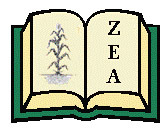
Zea E-Books Collection
Files
Download Full Text (22.3 MB)
Description
This book documents the biology of six species of New World quails that are native to North America north of Mexico (mountain, scaled, Gambel’s, California, and Montezuma quails, and the northern bobwhite), three introduced Old World partridges (chukar, Himalayan snowcock, and gray partridge), and the introduced common (ring-necked) pheasant. Collectively, quails, partridges, and pheasants range throughout all of the continental United States and the Canadian provinces. Two of the species, the northern bobwhite and ring-necked pheasant, are the most economically important of all North American upland game birds. All of the species are hunted extensively for sport and are highly popular with naturalists, birders, and other outdoor enthusiasts.
The New World quails and Old World partridges share many basic aspects of social and reproductive behavior, such as gathering during nonbreeding periods into small, usually closely related coveys. They also all exhibit prolonged monogamous pair-bonding, biparental brood care, reduced sexual dimorphism in adult plumages and body mass, and a high diversity of vocalizations associated with covey, family, and pair interactions. As relatively small species with high mortality rates, they have evolved rapid periods to sexual maturity, unusually large clutch sizes that are among the largest of all birds, and pairings that regularly attempt to renest following nest failures.
By comparison, the ring-necked pheasant is one of the Old World pheasants, who form less cohesive and less tightly structured flocks and have evolved nonmonogamous (polygynous or promiscuous) breeding strategies. Adult pheasants exhibit strong sexual dimorphism in plumage, body mass, and sexual behavior. Adult males have sharp tarsal spurs that are used during fights when establishing dominance status, and they perform some of the most spectacular sexual advertisement displays of all birds. Clutch sizes average considerably smaller than those of quails and partridges, whereas brooding durations and durations to sexual maturity are longer.
The book totals more than 85,000 words, and includes about 1,100 literature citations, 29 pages of drawings, 27 photos, and 11 maps. Together with an earlier volume on grouse, it completes a survey of the biology and behavior of all 19 native and introduced species of North American quails, partridges, and pheasants.
ISBN
978-1-60962-117-9
Publication Date
10-10-2017
Publisher
Zea Books
City
Lincoln, Nebraska
Keywords
quail, ornithology, birds, partridge, snowcock, pheasant, upland, Odontophoridae, Phasianidae, Perdicini, Phasianini
Disciplines
Animal Sciences | Behavior and Ethology | Biodiversity | Biology | Desert Ecology | Ecology and Evolutionary Biology | Evolution | Ornithology | Other Ecology and Evolutionary Biology | Population Biology | Poultry or Avian Science | Terrestrial and Aquatic Ecology | Zoology
Recommended Citation
Johnsgard, Paul A., "The North American Quails, Partridges, and Pheasants" (2017). Zea E-Books Collection. 58.
https://digitalcommons.unl.edu/zeabook/58

Included in
Behavior and Ethology Commons, Biodiversity Commons, Biology Commons, Desert Ecology Commons, Evolution Commons, Ornithology Commons, Other Ecology and Evolutionary Biology Commons, Population Biology Commons, Poultry or Avian Science Commons, Terrestrial and Aquatic Ecology Commons, Zoology Commons


Comments
Text, photos and illustrations copyright © 2017 Paul A. Johnsgard